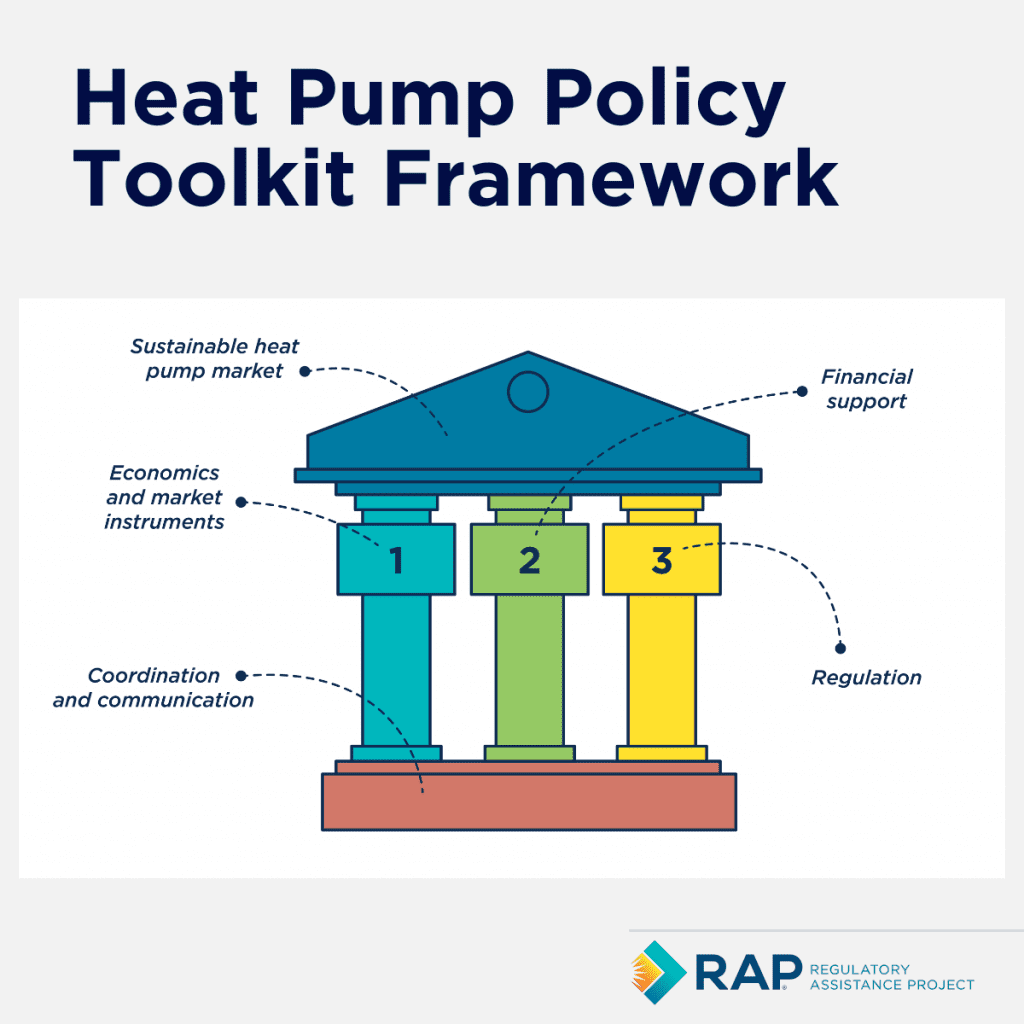Heat pumps, a critical technology for clean energy systems, are poised to become the most important technology for heating decarbonization. Currently, the vast majority of heat is provided by fossil fuels. In order to promote and encourage heat pump installations across the globe, the Regulatory Assistance Project, Agora Energiewende, CLASP and the Global Buildings Performance Network have developed this heat pump policy toolkit, which provides a suite of tools, and advice on how to use them, for policymakers interested in promoting this critical technology.
The structure of the toolkit is loosely based on that of a Greek temple, with foundations and pillars, supporting a rapidly growing heat pump market. The interactive toolkit (which includes clickable links throughout) also features short videos that give an overview of each relevant element of the toolkit. These videos make up a short series which complements this document.
This toolkit works as a synthesis of policy approaches to heat pump deployment and a guide to designing the best packages of policies. As you’ll see in the toolkit (and in the graphic below), a complete policy package needs to consider foundational elements and must also take account of each pillar. We provide details, examples and potential issues, and solutions within the various policy elements discussed.

Foundational elements of this toolkit recognize the need for coordination and communication around heat pump policy efforts and strategies.
Pillar 1 considers economic and market-based instruments. These instruments are fundamentally associated with balancing the economics of heat use towards clean options, such as heat pumps, so that their lifetime costs are cheaper than fossil-based alternatives.
Pillar 2 considers financial support. Within this pillar, we identify three key elements of financial support for heat pumps — grants and tax rebates, loans and heat-as-a-service packages.
Pillar 3 considers regulations and standards. We look at buildings codes and standards, appliance standards and heat planning and zoning.
To build an effective heat pump policy package, policymakers must consider foundational elements as well as each of the pillars. And even within each pillar, combinations of elements may be appropriate.
